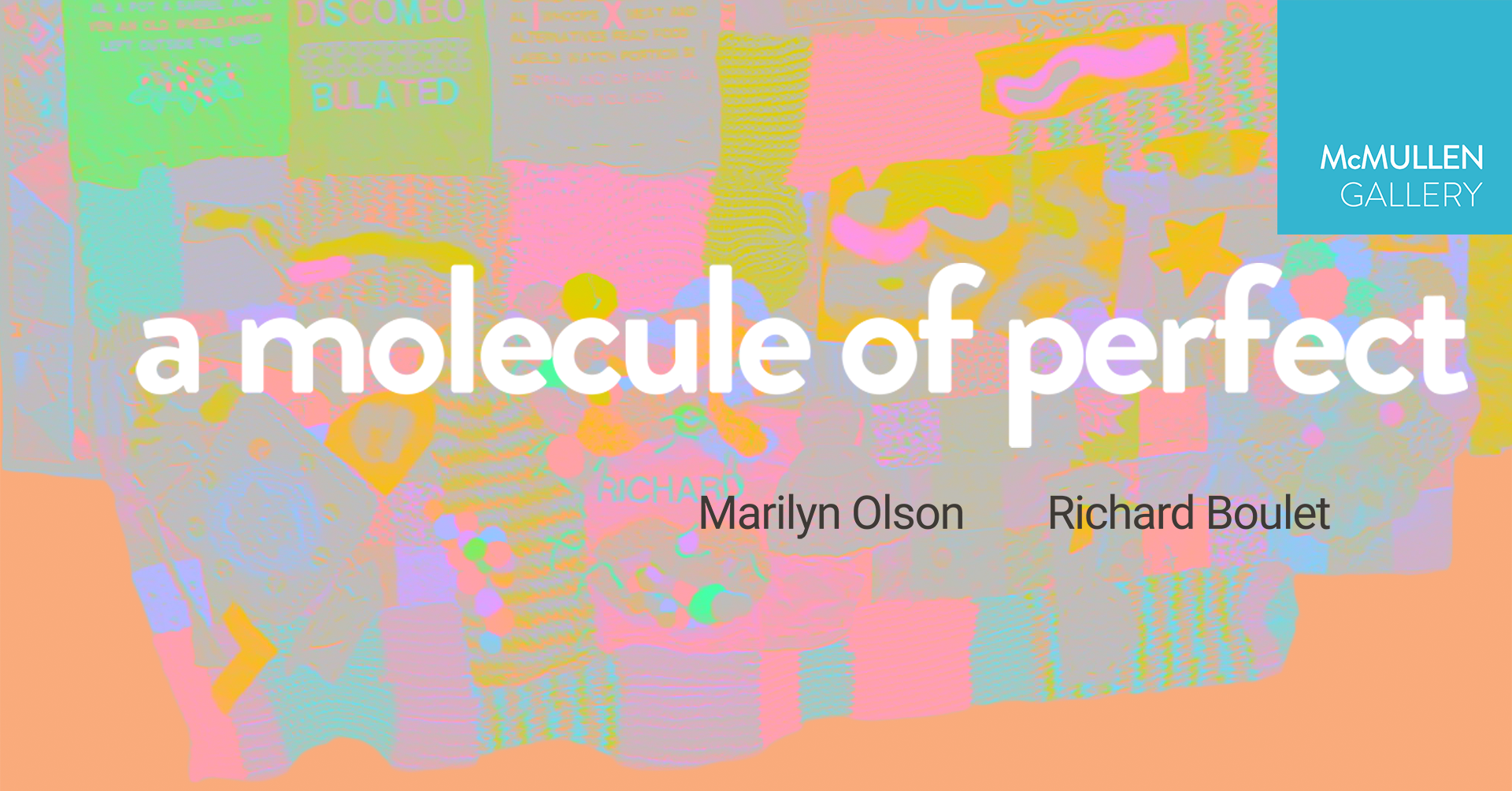“One molecule of perfect: the collaborative work of Marilyn Olson and Richard Boulet”
By Mark Clintberg
January 2020
There are: ribbons and swaths of vibrantly tinted organza; lavender and grey needle-felted sculptural pieces; a clear-plastic bag filled with rainbow-dyed pom-poms; and countless other handmade textile fragments and mass-produced supplies - each of which has its ultimate purpose in the large-scale, layered, and complex textile collages that will be featured in Marilyn Olson and Richard Boulet’s upcoming show. It is early January 2020, and I’m fortunate to visit these two artists’ shared studio in Edmonton. There is a sense of anticipation in this studio, where I am surrounded by their collaborative work and supplies.
The prolific energy that the two share is immediately evident from the array of textile-based artwork hung on the walls and laid out on furniture. They explain that they will meet every Tuesday and Thursday for the next months to complete this work. The artists tell me of their first experiences working together. Boulet asked Olson to make a border for one of his cross-stitched pieces. The project expanded as more and more elements were added, including a table-runner Olson had completed some time before. This integrative, collaborative method continued to grow as trust was further developed. The pair started working together in artistic collaboration in July 2019.
The collaborative work incorporates Boulet’s cross-stitch (composed through improvisation) and Olson’s crochet (often created according to a pattern or plan) among many other elements. In its use of text and image, the cross-stitching echoes some formal properties of the conventional sampler, such as regularity, typography, and iconography, but goes far beyond those conventions. Other noted influences on Boulet’s work include Keith Haring, Frank Stella, Joan Miró, and Paul Klee. Olson’s crochet work is compositionally and technically complex and features images such as multi-coloured tropical birds and iconic rubber ducks.
While there are elements in this shared practice that may seem quickly executed, looking carefully, one can see the extreme precision both artists have with their chosen tools. This collaboration has occasioned the ongoing exchange of skills and techniques between the artists, who learn from each other but also challenge each other’s usual ways of making craft.
Boulet and Olson’s collaborative work emphasizes equality and fairness. The two met through the Canadian Mental Health Association Edmonton’s Peer Connections program named Textile Arts Open Studio. The Open Studio program is self-funded, and runs off of proceeds from craft sales. The program is for people who have experience with diagnosed and non-diagnosed mental health challenges to meet, converse, and make textile-based artwork.
Boulet and Olson regularly commission participants in Open Studio to create textile elements that are then incorporated into their collaborative work. They both smile as they tell me they once commissioned a woman from the group to make forty-eight dishcloths, which they then used in a large-scale textile assemblage.
At first glance, some elements in this exhibition may seem to be found textiles - garnered through many trips to thrift stores. In fact, each hand-made component in these textile collages is made by Olson, Boulet, or by one of their many colleagues in the Open Studio program. Mindfulness regarding the ethics of their incorporation of pieces made by others is of the utmost importance to these artists, who emphasize that each person’s labour is paid and recognized to the extent desired by the contributor.
Talking with these artists in Boulet’s home, which functions as the duo’s shared studio space, it becomes clear that their work is a product of ongoing dialogue - regarding formal properties like colour, pattern, and texture, but also concerning theme, concept, and message.
Text appears in many formats in this work. Boulet has an active, daily writing practice. The subject of his writing is usually reflective, and summarizes how he is feeling each day. Many texts he develops find their way into his artwork. Often, the cross-stitched works feature neologisms, reflecting what Boulet calls an “alternate speech pattern for people with schizophrenia.” Several works feature multiple crocheted bookmarks made by Olson, arranged to form individual letters, shapes, and words.
The mental health benefits of handcraft are evident to these two artists. Olson, who has experience in garment construction and making leather horse bridles, takes her crafting with her on trips to dog shows, and on the bus. Boulet continually returns to cross-stitch as a means by which to manage anxiety. He always has needlework underway. For both artists, crafting is a routine pursuit and part of sustaining mental health.
The title of this exhibition makes reference to a perfect molecule. Boulet explains that this phrase is a positive affirmation: if a person has at least one perfect molecule in them, it is enough to give hope. Olson adds to this: if there is one molecule of perfect in the world, there must be others. A central message of this exhibition, Richard explains to me, is the credo “mental health for everyone,” and that art has been an important way for him to manage mental health. Marilyn adds “everything is art! There is art in everything - a bookmark, a doll’s dress, or a flower - you can find art in it.” Reflecting on the potency of these messages, the power of one perfect molecule – even inside of humans, as flawed as humans are – cannot be underestimated.

